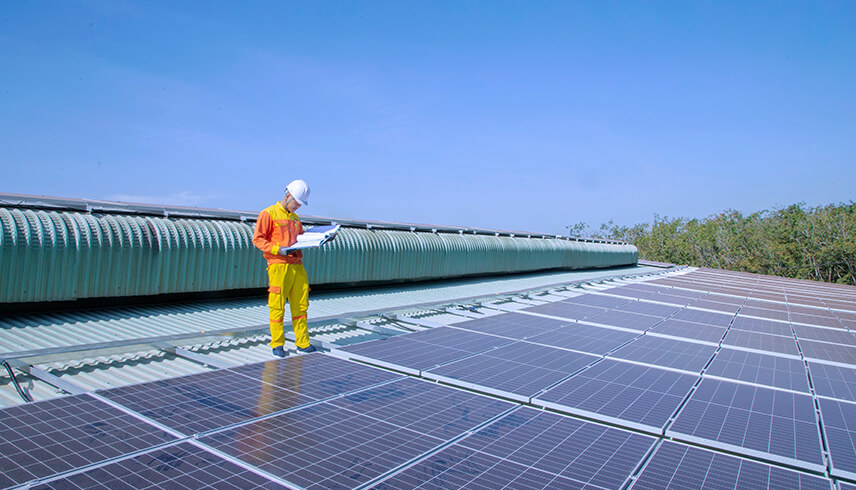
- admin
- May 25, 2024
- 10 Comment
Introduction
The world is at a critical juncture in the fight against climate change. The Paris Agreement, adopted in 2015, set a global framework to limit temperature rise to well below 2°C and ideally 1.5°C above pre-industrial levels. Achieving these targets requires a drastic reduction in greenhouse gas (GHG) emissions, culminating in net zero by 2050. However, transitioning to a low-carbon future demands significant investments in energy efficiency, renewable energy, and carbon reduction technologies. Fully funded financial solutions offer a powerful tool to accelerate decarbonization without burdening businesses and governments with upfront costs.
The Paris Agreement: A Global Commitment to Climate Action
The Paris Agreement is a legally binding international treaty under the United Nations Framework Convention on Climate Change (UNFCCC). Its key objectives include:
- Limiting Global Warming: Keeping temperature rise below 2°C and pursuing efforts to limit it to 1.5°C.
- Achieving Net Zero by 2050: Balancing carbon emissions with removal strategies.
- Nationally Determined Contributions (NDCs): Countries set their emission reduction targets and update them every five years.
- Climate Finance Support: Developed nations must provide financial aid to developing countries for climate adaptation and mitigation.
Net Zero 2050: The Path to Carbon Neutrality
Net zero means reducing GHG emissions to as close to zero as possible while offsetting any remaining emissions through carbon removal solutions such as reforestation, direct air capture, and carbon capture and storage (CCS). Achieving this goal by 2050 requires urgent and collective action from industries, governments, and financial institutions.
- Energy Efficiency: Retrofitting buildings, upgrading industrial processes, and optimizing supply chains.
- Renewable Energy Adoption: Replacing fossil fuels with solar, wind, hydro, and bioenergy.
- Electrification of Transportation: Transitioning to electric vehicles (EVs) and hydrogen fuel cells. Carbon Capture and Storage (CCS): Capturing emissions from power plants and industrial processes.
- Sustainable Finance & Investments: Mobilizing capital for green projects.
The Role of Fully Funded Solutions in Global Decarbonization
One of the biggest challenges in achieving net zero is the high capital expenditure (CAPEX) required for energy-efficient and low-carbon technologies. Many businesses and governments hesitate to invest due to financial constraints. Fully funded solutions offer an innovative approach to overcome these barriers.
What Are Fully Funded Solutions?
Fully funded solutions provide off-balance sheet financing for energy efficiency, waste-to-energy, and renewable power generation projects. These solutions allow businesses to implement sustainability projects without upfront costs, as funding is secured through energy savings, operational efficiencies, or long-term financing structures.
Key Benefits of Fully Funded Solutions:
- No Upfront Investment: Businesses and governments can adopt clean technologies without capital expenditure.
- Immediate Cost Savings: Energy efficiency improvements lead to lower operating costs and reduced energy bills.
- Risk Mitigation: The financial burden and operational risks are transferred to specialized providers.
- Scalability: Enables large-scale deployment of decarbonization projects across industries.
- Compliance with Climate Regulations: Helps organizations meet sustainability targets and avoid carbon penalties.
Fully Funded Solutions in Action
Several companies and financial institutions are driving decarbonization through fully funded models:
- Energy-as-a-Service (EaaS): Companies like Schneider Electric and Siemens provide fully funded energy efficiency upgrades with payment through shared savings.
- Power Purchase Agreements (PPAs): Businesses can procure renewable energy through long-term contracts without owning solar or wind farms.
- Waste-to-Energy Projects: Investors finance and operate waste-to-energy plants, converting industrial and municipal waste into clean power.
- Carbon Capture-as-a-Service (CCaaS): Emerging business models allow industries to implement CCS without large upfront investments.
The Future of Decarbonization with Fully Funded Solutions
As the world races toward net zero by 2050, fully funded financial mechanisms will play a crucial role in accelerating climate action. Governments, businesses, and investors must collaborate to scale these solutions, ensuring a just and inclusive transition to a low-carbon economy.
Conclusion
The Paris Agreement set the foundation for global decarbonization, but achieving net zero by 2050 requires rapid deployment of energy-efficient and carbon-reducing technologies. Fully funded solutions eliminate financial barriers, enabling industries and governments to implement climate-friendly projects without upfront investments. By leveraging innovative financing models, we can accelerate the global transition to a sustainable future and secure a livable planet for future generations.

